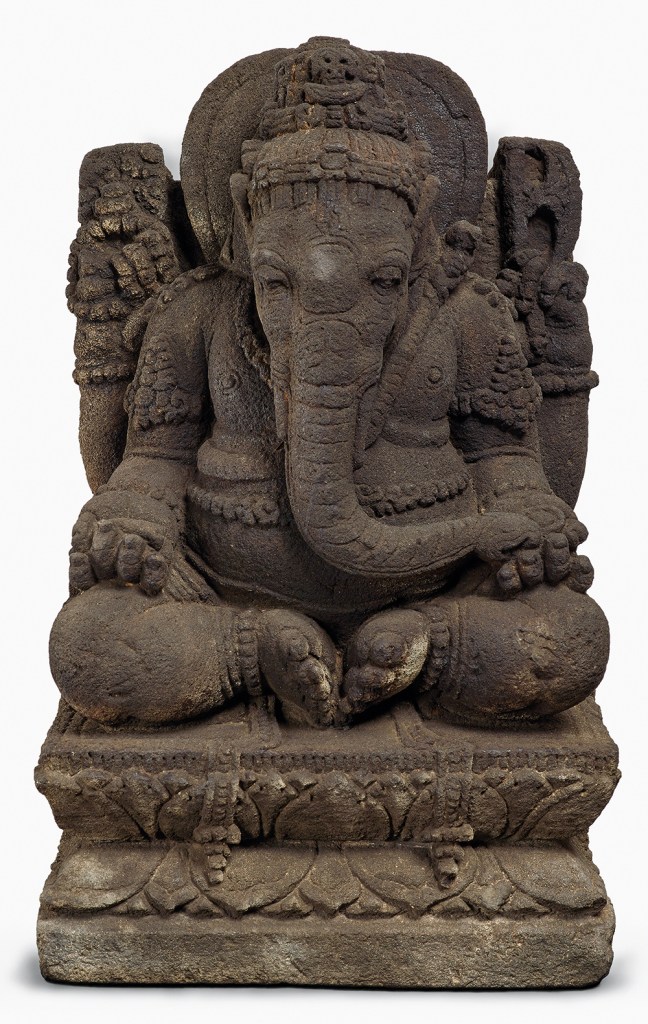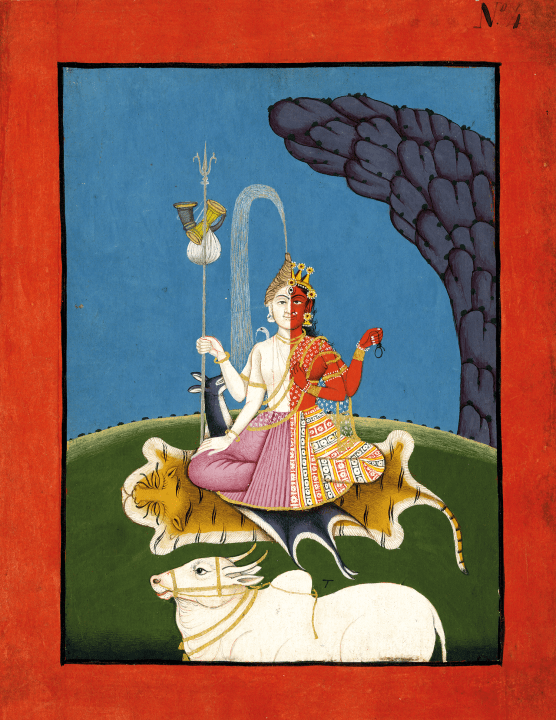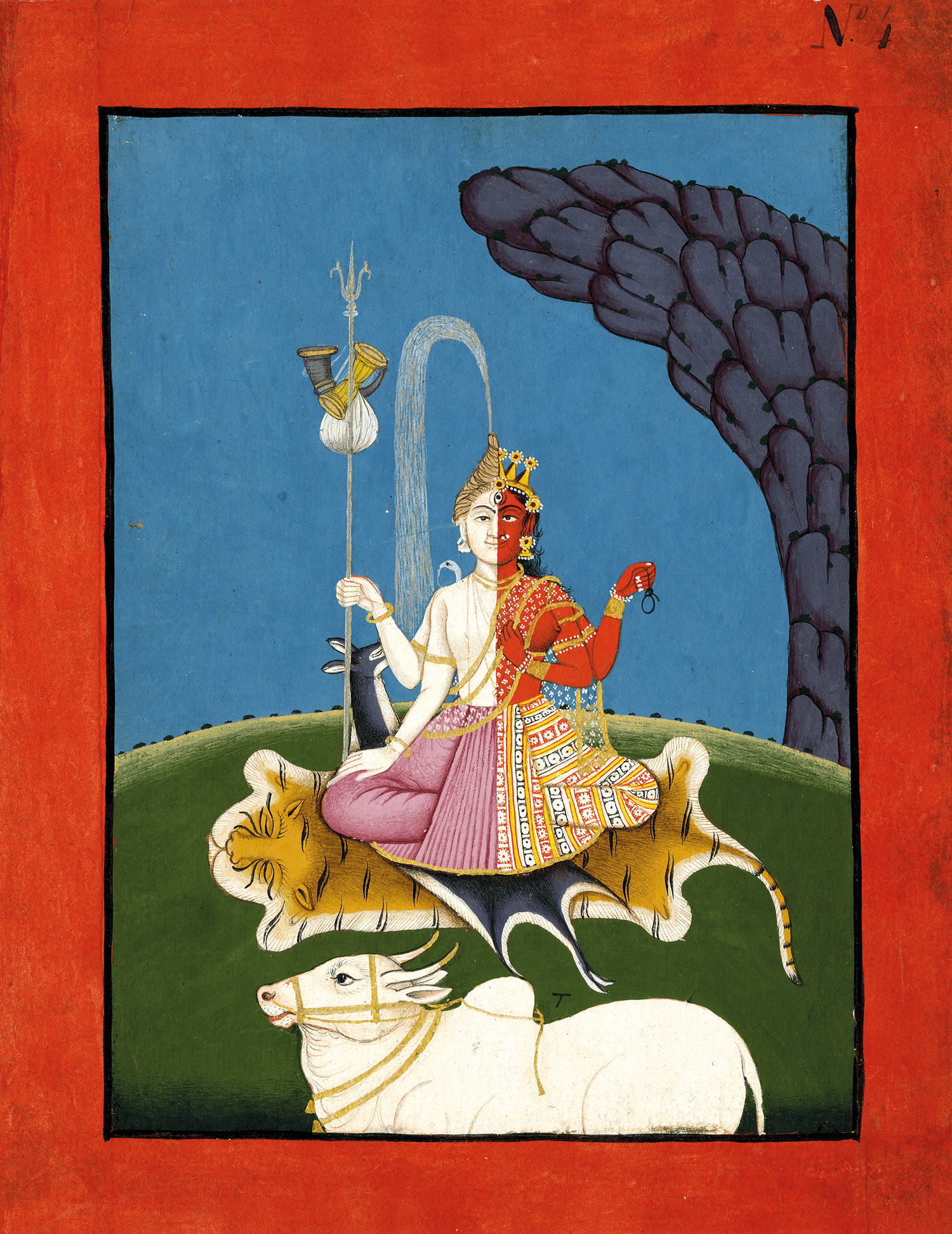
The most-watched TV programme in human history isn’t the Moon landings, and it isn’t M*A*S*H; chances are it’s Ramayan, a magnificently cheesy 1980s adaptation of India’s national epic. The show has a status in India that’s hard to overstate. Something like 80 per cent of the entire population watched its original run; in rural areas entire villages would crowd around a single television hooked up to a car battery. When the show ended, omitting the ‘Uttara Kanda’, the fairly controversial last book of the original poem, street sweepers across the country went on strike, demanding the government fund more episodes. The government caved.
But while every country has its pieces of cult media, in India the cult is literal. Some viewers would take a ritual bath before tuning in. Others would decorate their TV sets with garlands of flowers, or light oil lamps in front of the screen and perform aarti, a devotional rite in which a flame is waved in circles in front of an image of a god. And why not? There was an image of a god on the screen. He might have been played by an actor in a plastic crown, but Ramayan was a representation of Lord Ram.
Abrahamic faiths can be quite iffy about this kind of thing. At my maniacally Orthodox Jewish primary school, I was told in no uncertain terms about all the terrible punishments God periodically imposed on those of his followers who tried to make images of Him. At one point, in an art lesson, we were told to draw a picture of Moses receiving the Ten Commandments; one boy who made the mistake of depicting Yahweh as an enormous stick figure had to watch his effort being ripped up in front of the entire class.
Christianity has traditionally been more relaxed, but it has its own long history of recurring iconoclasms: Byzantine monks burning images of Christ; black-clad Puritans bursting into English churches to smash all the stained glass. In America, Catholic churches might have deposited heaving busloads of their parishioners outside suburban cineplexes to see The Passion of the Christ, but nobody got on their knees and started worshipping the screen. You could venerate an image of the crucifixion in a church, but Raphael’s version in the National Gallery is only a work of art.
As it happens, Indian religions used to be fairly similar. The earliest form of Hinduism was the Vedic religion that existed from around 1500 to 300 BC, and which was, as far as we know, firmly aniconic. If they did make any images of their gods, we haven’t found them. What we do know, from the writings they left behind, is that their worship was focused around a sacrificial fire. The oldest collection of Hindu texts, the Rig Veda (c.1500-1000 BC), consist of hymns to be sung in front of these fires and extremely detailed descriptions of the sacrifices to be thrown into the flames. From there, the fire-god Agni would share out the sacrifice with the rest of the pantheon. Mostly, Agni was given gifts of ghee, grains and soma. Sometimes there were animal sacrifices. It might have never been actually carried out, but there’s one more, the Purushamedha sacrifice, in which you offer the gods human flesh.
It’s likely that the Hindu tradition of devotional images came about in response to Buddhism, but Buddhism was also, originally, very strict about images. This makes sense, given early Buddhism’s focus on nothingness and impermanence. During his life, the Buddha didn’t call himself ‘me’ or ‘I’, since the self doesn’t exist, but Tathagata, which means something like ‘the one who has thus gone’. For the first few centuries of the religion, there was a strong taboo on any direct representation of the Buddha as a man. The preferred way to show him in stone carvings was as an absence. You could symbolise the Buddha with the image of an empty crown, or a riderless horse. The most popular image was the Buddhapada, a pair of footprints: the hollow left by something that no longer exists. The familiar smiling, seated figure didn’t emerge until more than 500 years after Siddhartha Gautama achieved enlightenment. It’s as if we had started depicting Henry VIII in 2025.
The preferred way to show the Buddha in stone carvings was as an absence
The situation is very different today. Hinduism still has room for interesting abstract forms, like the phallic lingam that represents the god Shiva, but most Indian religions are intensely visual religions. When Hindus visit a temple, they won’t usually say they’re going for puja (prayer), but for darshan, which means ‘vision’. The most important element in worship is to look at the image of the god. But it goes both ways: there’s darshan dena and darshan lena, giving and receiving sight. You look at the god, the god looks at you. The murti or idols in Hindu temples often have large, brightly painted eyes. The representation does not have to be exact, but the idea is that any image of a deity will be inhabited by that deity. Sometimes small street-corner shrines in India will consist of a small, roughly carved disc, or even just a corn husk, watching you with painted eyes as you pass.
This makes exhibiting some of these objects difficult: how are you supposed to display a historical artefact that is also a living deity? At the British Museum, Ancient India: living traditions tries hard to accommodate their dual status. There’s a room dedicated to each of three major Indian religions, Hinduism, Jainism, and Buddhism, and along with some of the treasures of the British Museum’s archives there’s also a short video in which a modern-day British practitioner explains their worship. Some of these treasures really are extraordinary. A tiny gold reliquary that contains the first-ever figurative representation of the Buddha (c.AD 1st century). There’s a magnificently fluid Ganesh, carved out of volcanic stone a thousand years ago (see below). Stranger are the fierce, grimacing yakshas, teeming nature-spirits that might have evolved into the more stately Hindu gods. But there’s also a plasticky Ganesh statue from 2007 owned by an events company called Om Creatives Ltd, and a photo of the god being paraded on the banks of the Mersey in 2014. Many of the figures of gods and sages are displayed on wide plinths, giving visitors space to leave an offering in front of the murti if they want. When I went, none of the visitors had done so. The museum is its own kind of religion, with its own rituals.

But if we’re considering these works as part of a living religion, and not just objects from the past, it’s striking that India’s second-largest religion doesn’t appear anywhere in the exhibition. Islam has been an Indian faith for more than a thousand years, and in that time plenty of uniquely Indian traditions have emerged. There are Sufi shrines, dargahs, that are also sacred to Hindu deities, where strange new forms of syncretic worship have taken shape over the centuries. Islam tends to be strongly aniconic, but then so does Sikhism, another autochthonous Indian faith that doesn’t get a look-in here. Part of the problem is that the curators are a little too eager to make a clear identification between the religions of two millennia ago and their practitioners today. There is no straight line between them; religions, like everything else in the world, constantly change. These objects might have meaning for modern-day Hindus, Buddhists, and Jains, but the people who actually made them are gone.
Maybe my favourite object in the exhibit was a tiny first-century copper statuette of a four-armed goddess found in the Deccan, central India. She has flowers in her hair and a girdle around her hips, but we no longer know her name. Whatever cult worshipped her is now extinct. But maybe her presence is still in there, looking out at the new kind of devotee that shuffles around the museum, seeing and being seen.








Comments